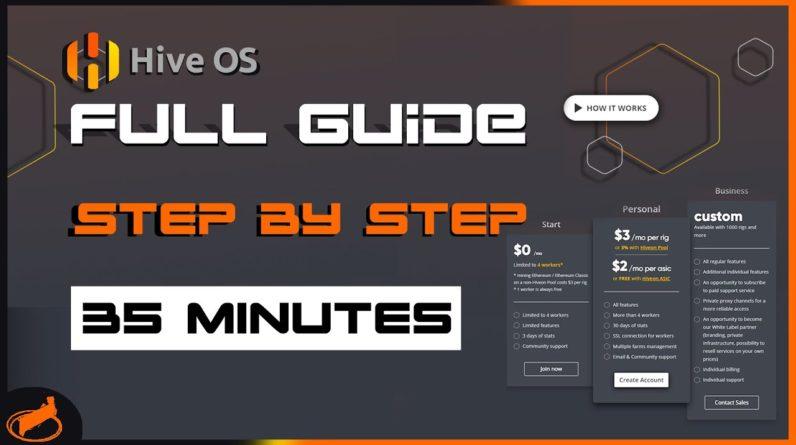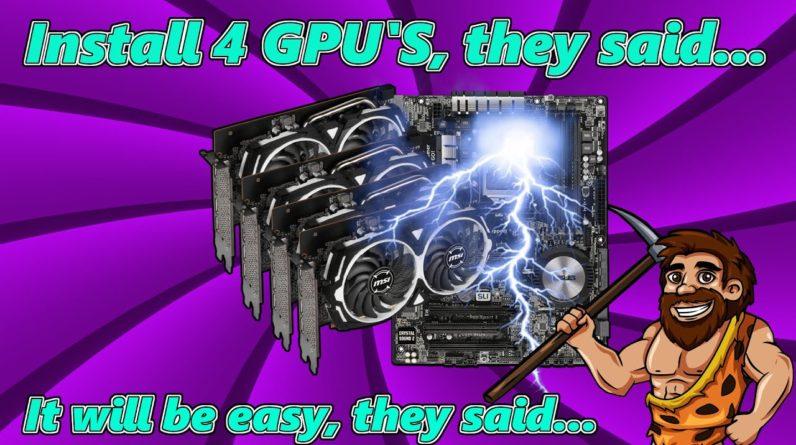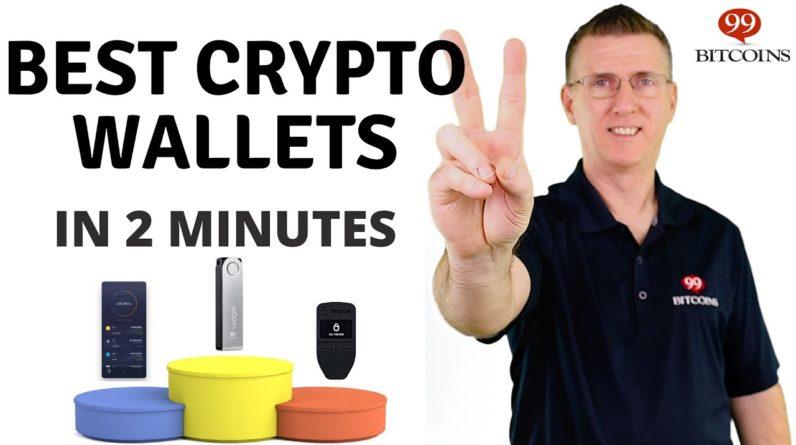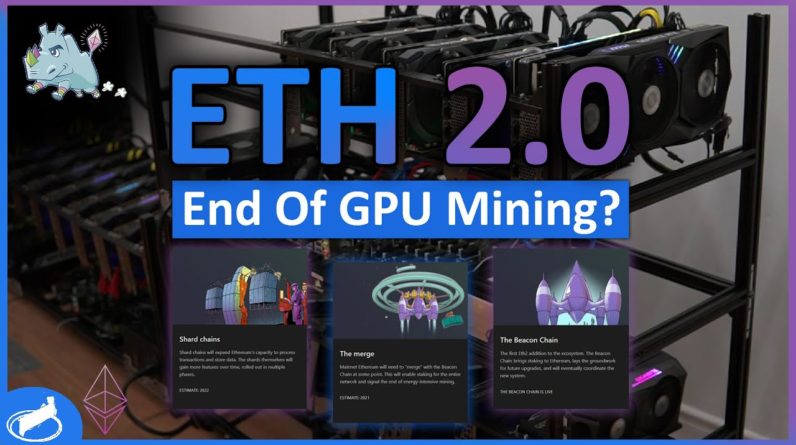hey everyone welcome back to another mining
chamber video in today's video we are going to talk all about mining pools and which pool
you should be using all the different payment structures as well as everything that
you need to know about pools in general so if you're new to mining or you have any
confusion regarding to mining pools i hope this video will clarify everything for you now let's
go ahead and get started right after the intro first thing we should talk about is
what are mining pools and how they work in plain english mining pools can be envisioned
as a team digging actual gold from the ground the more people that dig together the more likely
they will be able to find some gold and after the gold is found everybody gets a little cut from it
based on the effort that they put so now on the contrary solo mining would be just one individual
digging reducing his or her chances to find gold dramatically but if that individual digging
finds gold he will be able to keep the entire reward for himself now i did touch base on solo
mining a little bit for the cryptocurrency mining for dummies video but i will eventually make a
full video regarding to solo mining now there are many mining pools out there some are identical
while others might have better code base different payment structures and all around improvements to
handling the miners on the network these pools run on servers and they can be pretty expensive to run
but after the mining pools acquire a good enough miners base they will be able to be profitable
and that is because the majority of mining pools take at least one percent of fee even though one
percent sounds like it's a small amount of money it really does pay off so let's imagine the mining
pool has a thousand giga hash on their network in other words one terahash then they are getting
10 gigahash of mining profits as a dev fee but that will be a topic for another day now let's
focus on the miners part of it like i mentioned before there are different payout structures
for mining pools the most popular ones being pps plus and ppl and s but there are also other
types that are not that common now when i started making this video i'm going to be
honest with you guys i have no clue what any of these terms mean even after trying to read up
on them i am still just as lost and since we are entering the technical zone i brought someone
special to explain to us the technical terms in ways that will sit just right for all of us
Hello, I'm Alex.
I am the lead developer over here at Flexpool. Today I would like to share
some knowledge about mining pools and answer some frequently asked questions. I think it would
be nice to start with the reward systems first. What is better, PPLNS or PPS? Two reward systems
are really different from each other, but in the end, they yield approximately the same profit.
With PPLNS, you are getting paid exactly for what you have mined on the pool. It pays your share
of the block, where the share is your hashrate divided by the pool's hashrate. This reward scheme
is known for being the most profitable for miners since payouts are coming from the block rewards
themselves.
This payout scheme has only one con, and this con is infrequent rewards. Note that
this rule doesn't really apply to mining pools that have a really massive share of the entire
network's hashrate. PPS pools were designed to fix that con and are featuring stable income for
miners. This is achieved by the pool paying the miner's reward no matter if the block was found.
PPS pools are pretty similar to the hashrate marketplace platforms like NiceHash. By obtaining
this feature, unfortunately, PPS introduces some other cons.
In my opinion, the most significant
con is that PPS pools do not guarantee all miners' balance. Effectively, this makes a PPS pool look
like a bank. Additionally, PPS pools add some level of shadiness since all the rewards are
not coming from the Ethereum network directly. To summarize, PPLNS is the best if you
want to earn the most, and PPS is the best for you if you want to
have the most stable income. Now I am going to explain a really
confusing part, shares. Actually, only a few miners understand what they really
are. Shares are often represented as pieces of the block the pool is mining. Understanding shares can
be difficult for beginners. If you are a beginner, I would recommend perceiving them in that way.
But for experienced miners, I will explain what Shares really are. Technically, shares are
the same pending blocks the pool is mining, but with the only difference in
difficulty. Mining pools set a static, relatively low difficulty for rigs to be able
to mine them frequently. This is useful for things like keeping track of workers' effective
hashrate.

The difficulty set by the pool is called Share Difficulty. Greater share difficulty means
more time to find a share. Lower share difficulty means less time to find it, respectively. And to
be honest, so far, this is the only difference. Moving to the next part, a relatively new topic.
What is the difference between mining pools' payout fee policies? Some pools like Flexpool
prefer sending transactions while paying a fair, normal transaction fee. Other pools
like Ethermine prefer cheating on the Ethereum network by self-mining feeless
transactions. Those pools do really loud claims that sound like "We're paying all
our miners' transaction fees," but in fact, all those fees are still paid by miners.
Depending
on the block reward, it results in miners' income being reduced by 3-5% as an indirect tax to cover
the pool's payouts. This was acceptable when transaction fees represented only a small
fraction of the block rewards, but right now, fees on Ethereum represent 50-60% and
sometimes over 80% of the entire block reward. For now, I think that I've covered all
the most complex parts of mining pools. Thank you to Mining Chamber for allowing
me to appear in this video.
Now back to So. thank you so much alex for taking your time and
explaining to us the technical terms about mining pools it was extremely helpful and now we can
go ahead and recap and talk about which pool you should be using so from what we learned about pps
and pp lns pps would be good for having a stable income and then pplns would be good for maximizing
your mining profits because for pps you don't get paid from the block rewards themselves but for ppl
s you do get paid from that and like that you're assured that you will get your hashrate's worth
based on the block reward that was solved so the first thing that comes to selecting the mining
pool that you want to use would be the server itself so each mining pool runs on different
servers some of them are only located for certain regions while some others are global so
for example here in miningpoolstats.stream you can see here that we have different pools and there is
flags and a globe next to them and that just shows you the region that they work in so for spark pool
it's in china and then ether mine they have us eu and asia so these are all the different servers
that you can connect to and it's always preferred to connect to the one closest to you even
though yes you can connect to the one in china but your latency might be an issue and it will
lead to a lot of stale shares so now if we go back to flexible for example and hit on start mining
you will be able to find here multiple different regions that you can select from and then you can
connect to those pools on the mining software that you're using so if you're using phoenix miner you
can just put this pool address and then you'll be able to connect with the proper port so now
coming to the ports you have the secure ssl port and the regular port and then your username
and password so password is most of the time going to be empty and your username will be your
ethereum address and dot worker name so you can put whatever worker name you want and then as for
the port the secure ssl port and the regular port you can use either of them but just to be safer
you can use the ssl to encrypt your traffic and in some scenarios for example the ethermine.org
when i mine to it i usually end up using the alternative stratum port instead of the straight
import regular or i would use the ssl one because the regular stratum port would not work for me
it keeps disconnecting me from the pool so you can also feel free to try different ports and see
how they work for you and just make sure that you connect to the proper server that is closest to
your region so the second thing i would say when you're trying to select your pool is based on your
hash rate so if you do have 500 mega hash and more and you want to get the maximum profits i would
recommend selecting a pool that does ppl and s instead of pps even though you won't be getting
frequent rewards but you will be getting the maximum profits for the block rewards and this
also applies for the miner's transaction within the block like we talked about with ethermine
how they include the miners payouts in the block itself which reduces your block reward by three
to five percent and then with flexpool the miners payouts are not included in the block reward
themselves so you won't be wasting space for miners payouts instead you'll have to pay your
own transaction fee so these transaction fees can vary and they can get pretty expensive but that
is if you send out small amounts so if you send for example 0.1 ethereum which comes around 180
you will still be paying a very similar amount of transaction fee so that is why it's best to
do a higher minimum payout so that you have to pay the transaction fee less frequently so for
example this miner right here it's not my address but it's some other miner and they have their
minimum payout set to 30 ethereum so that means the pool is only going to pay them when their
unpaid balance reaches 30 ethereum and like that you can expect a three to five percent payouts
because the miners transactions are not within the block themselves and instead this miner has to
pay for that transaction by getting paid out that 30 ethereum so losing around five to ten dollars
in transaction fees is much more profitable than losing three to five percent of your 30 ethereum
now i personally have the minimum payouts set to one ethereum and i'm mining with over one gigahash
and like that i do see less frequent payouts but i still do get the maximum amount of money i will
talk about how to change your minimum payouts and talk about the different hash rates current
average and reported in this section coming up but now to clarify if you do have less than 500 mega
hash and you want to get more frequent payouts then you can go with something like ethermine
and then put your minimum payout pretty low and like that you won't be paying any transaction
fees but you will be getting more frequent rewards and if you do have more than 500 mega hash and
you don't want to lose out on the three to five percent of miners transactions within the block
then you can use a pool like flex pool and just have a higher minimum payout so that you don't
have to pay too much transaction fees either so that will leave you with two choices that you
can pick so you don't have to really overthink this topic at all just choose a pool based on your
hash rate and then get started with it and if you want to test out different pools you can always
feel free to do that so now let's get to the final part which is the dashboard so i'm going to use
flexpool and ethermine for an example here but all the pools generally follow the same structure
so now let's first talk about how you will get to that dashboard every pool will have a search by
wallet address field where you can just click on it and then put your mining address this address
will be the ethereum wallet that you are mining to so once you put that address in there and then you
hit search you will end up getting this dashboard right here it will show you your address and
then it will show you when you joined and all that good stuff almost all the pools follow the
same structure so you'll be able to follow this guide through any pool that you're using and if
you just started mining then just give it some time to reflect on your dashboard it can take
up to three hours or one hour until you see it reflecting on your dashboard so first let's start
with the flexible dashboard and then we can go to the ether mine dashboard and then hopefully you
guys like that will understand everything you're looking at so the first thing we have here is your
address and then they have a ranking system for the donations as well as the minimum payout and
the pool donations and then when you joined so the best thing about flexpool is that you can remove
your pool donation completely by signing a message or you can keep it at one percent to support
the project i would honestly keep it at one percent because you are supporting them that
way now for the minimum payout you can also change that from the settings tab right here
and you can also change your pool donations here so you just click on pool donation you put the
number you want and then you continue with the process and then for your minimum payout you just
go to other settings and then you set your minimum payout you can also set your gas price limit and
email notifications so these email notifications will notify you when one of your rigs go offline
and it can be really helpful if you have a lot of rigs that you're managing and you want to keep
an eye on them i would highly recommend turning on email notifications and now as for the minimum
payout like i said before this is when you will be paid from the pool so you won't be seeing any
balance in your wallet until you reach the minimum payout of the pool itself and you can change this
to be 0.10 ethereum one ethereum whatever number that fits your needs and like i said if you're
using a pool like flexpool and you don't want to pay too much transaction fees then keep your
minimum payout a little bit high but if you're using something like ethermine then you can feel
free to keep your minimum payout pretty low and here you have the next block share and this will
tell you approximately how much you'll make from the next block being sold and then when you go
a little bit lower you will see your hash rate so your current your average as well as your
reported hash rate now this usually causes a lot of confusion but let me explain it to you very
simply your current hash rate moves on based on the shares that you've submitted so in some hours
you will be submitting more shares than others and that's why you will see your current hash rate
move around a little bit more than the other ones so your current hashrate can go up 20 or down 20
and it's completely fine you don't need to freak out about it the one thing that you need to keep
an eye on is your average hash rate as long as your average hash rate is looking good then you'll
be fine you can also see that this one does get a bit lower because your current hashrate moves
and then it calculates it based on your current hashrate so sometimes your average will be above
your reported or below your reported and now what is your reported hash rate this is exactly what
your mining terminals are showing you so if you're mining with 100 mega hash on your phoenix miner
then the reported hash rate will be 100 mega hash so this is the number that reflects on your
system and as long as you have good reported hash rate and good average hash rate then you're
all set and now the last thing that we have here are the shares and like alex explained it this is
like solving part of the block and with shares you have valid stale and invalid so valid chairs are
the one that are successfully submitted it doesn't mean that it's the right solution to the block but
it means that you did try to attempt to solve the block and you will be getting paid according to
that and then for sale these are the ones that are submitted after the block is already sold so
having a higher sale percentage usually means that your network is slow or you're using wi-fi so i
would highly recommend connecting with ethernet and connecting to the closest server to your
region generally having below one percent of stale is completely fine if you have around three
percent or four percent it's not bad either but try to lower it as much as you can by doing
the proper steps in my experience with flex pool i've had the least amount of still shares
so you can try different pools as well and see which one will give you the least amount of sales
shares now the last thing is the invalid chairs the invalid chairs are usually due to hardware
so to fix up your invalid chairs the first thing you want to look at is fixing your overclocks
reducing your memory clock and stuff like that try to have not more than 10 invalid chairs
within an hour having zero percent is very ideal but if you have one every five hours or so
then you don't need to worry about it too much so now after the shares you have here the
graph that shows your hash rate and the shares and then if you go lower you'll be able to find
your workers so these are all the workers that are running on your wallet address so you can
have multiple workers on your wallet address and then if you click on them you'll be able to
find more information there so we'll show you the worker and then it will show you the hash rate of
that worker as well as its shares and everything like this so with ethermine will be exactly the
same thing you can see all the information that you saw on the other page you can go to payouts
and see the payouts that you got paid as well as changing your minimum payout from settings so
here with this miner that has less than 500 mega hash he has the minimum payout set to 0.1 and like
that he will be getting paid frequently and some pools have estimated earnings which will show you
approximately how much you're going to be making just remember that these numbers do change not
because it's telling you you're going to make 40 a day that means it will always be that way if you
don't know what impacts your mining profits you can feel free to check out cryptocurrency mining
for dummies video that i've made recently which will help you understand exactly what impacts
your mining profits now that wraps it up for the dashboard guides if you have any questions please
feel free to leave them in the comments below and thank you so much alex for joining us in this
video and you guys should also check out serpent x special forces video on mining pools it has a
lot of good information so i will leave the link for it in the descriptions below along with the
other links that we went through in this video if you guys think i've missed anything please
let me know in the comments below and based on how much i missed i can go ahead and make a part
two and we can talk about it then so thank you guys for watching this video and if you enjoyed
it please leave a thumbs up and if you have any questions leave them in the comments below thank
you guys again and i hope you have a wonderful day you



![[8GPU Mining Case] 8 X 3060 GPUS with two CPU, ETH Mining Rig Case 3060 Best Mining Motherboard X79 5 rootF IMG 626ad36770423](https://cryptomarkethq.com/wp-content/uploads/2022/04/rootF_IMG_626ad36770423.jpg)



